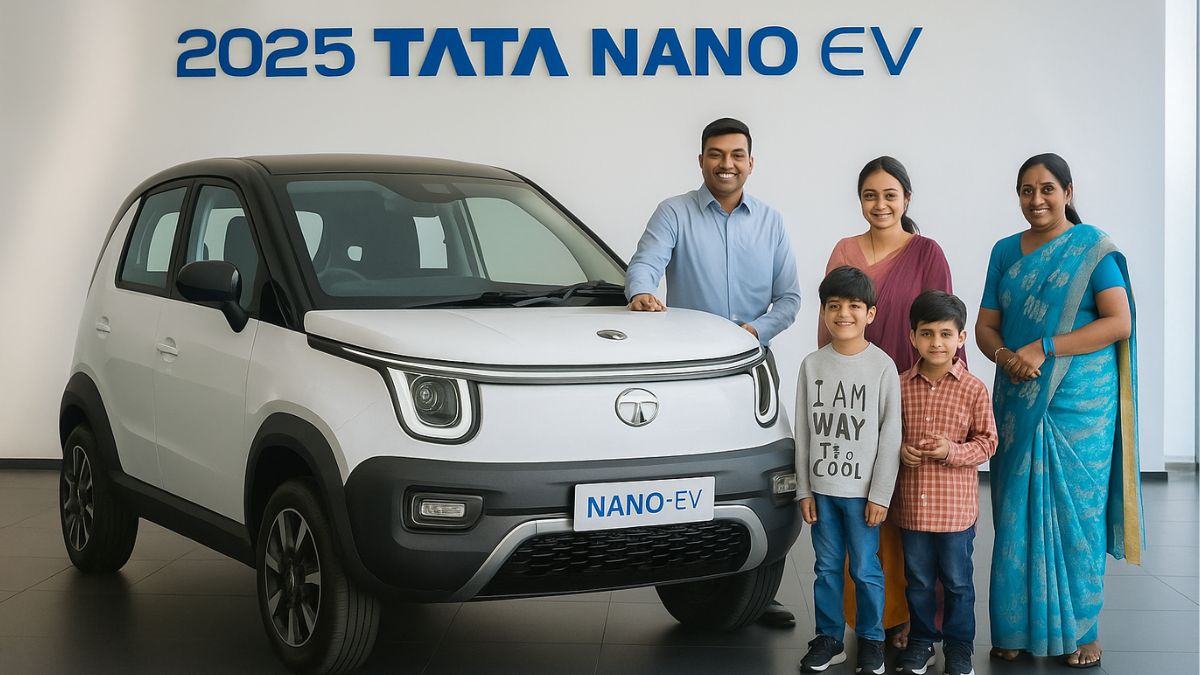The Tata Nano EV 2025 is set to redefine budget-friendly electric mobility in India. Once known as the world’s cheapest car, the Nano is returning in a brand-new electric avatar. Tata Motors is targeting city commuters, students, and small families who want an affordable, eco-friendly car without compromising on modern features.
With a competitive price range of ₹4–7 lakh and an expected launch by late 2025, the Nano EV could disrupt the entry-level EV market. Compact design, smooth performance, and smart technology make it a strong rival to petrol hatchbacks and even premium scooters. Let’s explore whether this iconic car’s comeback lives up to the hype.
Design and Exterior Styling
The Tata Nano EV 2025 retains its compact hatchback profile but adds a fresh, modern twist. Sleek LED headlights, a closed grille, and aerodynamic lines enhance its futuristic look. Stylish color options like metallic blue and silver bring a trendy appeal for young buyers.
Its small size makes it easy to drive in crowded cities while ensuring hassle-free parking. The stronger build quality also improves safety compared to the older Nano.
Interior and Cabin Comfort
Despite its small footprint, the cabin feels surprisingly spacious. The Tata Nano EV 2025 offers seating for four adults with improved legroom and headroom.
Foldable rear seats allow additional boot storage for shopping or luggage. Premium fabric seats, AC vents, and better insulation create a comfortable ride. The minimalist dashboard design highlights practicality while keeping costs low.
Infotainment and Connectivity Features
The Nano EV is no longer basic. It packs a 7-inch touchscreen with Apple CarPlay and Android Auto. A digital instrument cluster displays speed, battery percentage, and trip details. Bluetooth connectivity, USB ports, and a rear parking sensor enhance convenience.
Tata may also offer connected car features through a mobile app, letting users lock/unlock doors and control AC remotely.
Performance and Powertrain Options
The car is expected to feature a lithium-ion battery offering a driving range of 200–250 km per charge. The top speed is estimated at 80 km/h, suitable for city commutes.
A home charger can fully charge the Nano EV in 6 hours, while a fast charger takes it from 10% to 80% in just one hour. The electric motor delivers smooth, noiseless rides with low running costs compared to petrol vehicles.
Safety and Driver Assistance Features
Safety is a priority this time. The Tata Nano EV 2025 comes equipped with dual airbags, ABS with EBD, rear parking sensors, and seatbelt reminders.
The car’s body structure has been reinforced to provide better crash protection. Though it is a budget EV, Tata ensures that essential safety features are not compromised.
Boot Space and Practicality
The compact design makes the Nano EV a practical city car. Foldable rear seats extend boot space, making it suitable for groceries or weekend bags. Its lightweight frame ensures agility, while the small turning radius is perfect for narrow urban streets.
Pricing Across Trims
The Tata Nano EV 2025 is expected to launch with multiple trims priced between ₹4 lakh and ₹7 lakh. This competitive pricing positions it as India’s cheapest electric car, undercutting rivals like the Renault KWID EV and Maruti Alto EV.
Fuel Economy and Efficiency
Being a fully electric car, the Nano EV eliminates fuel costs. With a per-km cost as low as ₹1–2, it is far more economical than petrol hatchbacks. Lower maintenance also adds to its efficiency, making it an attractive option for budget-conscious buyers.
Booking and Test Drive
Tata Motors is likely to open pre-bookings by late 2025. Interested buyers can register online through the official Tata Motors website or visit authorized dealerships for test drives once the car is officially launched.
Final Verdict – Should You Buy the Tata Nano EV 2025?
The Tata Nano EV 2025 stands out as a game-changer in India’s entry-level car segment. Affordable pricing, zero fuel expenses, modern features, and eco-friendly performance make it an excellent choice for first-time buyers and city drivers. If Tata delivers on its promises, the Nano EV could be the most practical and economical EV for Indian roads.
Disclaimer
This article is based on industry reports, leaked specifications, and expected features of the Tata Nano EV 2025. Final details may vary after the official launch. Buyers are advised to verify specifications and pricing from Tata Motors before making a purchase decision.








